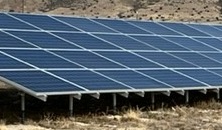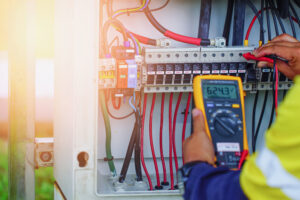Claims Leakage Reduction Strategy: Susceptible Electronics to Watch Out For
Carriers are continually strategizing how to fight back against the growing difference between what they spent and what they should have spent on a claim.
Claims leakage cost carriers more than $30 billion annually and accounted for 5 – 10% of all claims paid, according to a 2019 article by Hyland Software Inc. In the years since, that number may have even gotten worse because of claims related to COVID-19 and extreme weather events.
Property claims settlements account for thousands of dollars in carrier indemnity leakage annually. “zimmytws /Shutterstock.com”
One way to combat claims leakage is by knowing where potential risks may be and having a consistent, objective process to eliminate them.
Areas With Risk for Claims Leakage
Insurance professionals can learn about many of the electronic equipment categories that are susceptible to claims leakage in the CCG IQ 2021 Annual Report, released by StrikeCheck’s parent company, CCG IQ. The report spotlights notable trends established from assessment results for hundreds of thousands of items incorporated in claims. Data points include how often assessments showed equipment had a different cause of loss than reported.
Nearly 1 in 3 electronics and specialty equipment in claims assigned to StrikeCheck had a typically non-covered loss, such as wear and tear. Almost 1 in 5 items were non-damaged at the time of assessment. These are representative of areas where adjusters could have risked thousands of dollars of potential claims leakage had they not sought actionable expert assessments to verify cause of loss.
Settlements for replacement equipment instead of more appropriate repairs are also causes of unnecessary claims leakage.
Equipment at risk for this type of claims leakage include:
- Solar Powered Equipment: Whether it was commercial property or residential, solar powered equipment had a decisive gap between the average cost of repairs and the average replacement cost. For commercial equipment, average replacement costs were $13,349, while average repair costs were $2,217.
Solar power equipment, including panels and inverters, are at risk of giving carriers unnecessary claims leakage without accurate assessments.
- Pool equipment: Hot tubs, pool pumps, and other outdoor equipment accounted for 4% of the property StrikeCheck assessed. The average replacement cost for residential pool equipment was $4,693, compared to $900 for repairs.
- Consumer Electronics: The difference between the average repair and replacement cost for commercial consumer electronics was $1,435. For residential consumer electronics, that number decreased to nearly $250. While that seems minimal for an individual claim, nearly 1/3 of all assessed electronic equipment was a consumer electronic. That $250 could exponentially increase a carrier’s claims leakage.
- Electrical items: Electrical equipment includes electrical service and wiring, generators, and outlets, switches, and fixtures, which are all necessities for commercial and residential policyholders. The average replacement cost for commercial electrical equipment was $16,534, while repairs averaged $2,026.
How to Avoid Claims Leakage
Adjusters need to know what to do when they are assigned a claim with known risks for claims leakage. It is often correlated to inefficient claim processing and improper and errant payments, or worse, poor decision-making by an adjuster, according to the International Risk Management Institute. Consequences of claims leakage include lost revenue, potential increases in policyholder premiums, and a more negative policyholder experience.
One way to reduce claims leakage is by having an expert test equipment. “Kampan/ Shutterstock.com”
Insurance professionals can follow these steps to decrease claim leakage:
- Verify cause of loss on every claim to avoid settling for non-covered perils or non-damaged equipment
- Evaluate if repairs are a better solution than replacements, which are often costly and unnecessary
- Research market value pricing to ensure policyholders and their contractors are giving reasonable estimates
- Seek expert help when unsure
The most effective method of ensuring more accurate settlement decisions is by seeking objective, expert support. StrikeCheck uses comprehensive testing strategies to verify cause of loss and scope of damage for each electronic or specialty item included in claims. Actionable onsite assessment reports note these results as well as repair and replacement recommendations, market value pricing for all equipment, and settlement recommendations.
Find out more data trends in the CCG IQ 2021 Annual Report. Add StrikeCheck assessments to your claims leakage reduction plan or see the difference now by submitting a claim.



